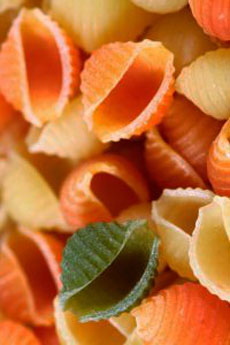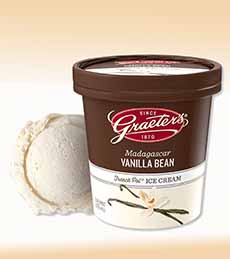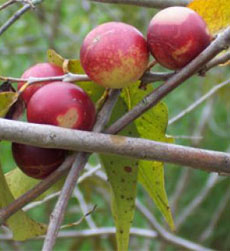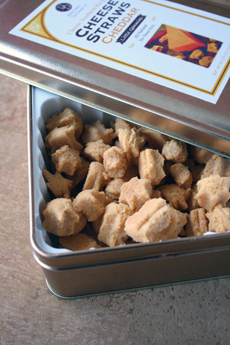|
Make “dessert pasta” for your favorite pasta lovers. We have a delicious selection of dessert pasta recipes.
After looking at our selection of dessert pasta, reader Katelyn Cronin submitted her own, easy-to-make idea.
> National Dessert Day is October 14th.
> National Pasta Day is October 17th.
RECIPE: VANILLA SHELLS, AN EASY DESSERT PASTA RECIPE
Katelyn makes this recipe with small shells, but you can try one jumbo shell per person, stuffed with ice cream.
You can choose a flavor other than vanilla, but make it a good pairing with the pasta. Banana, Butter Pecan, Chocolate, Dulce de Leche, Peanut Butter, Rum Raisin, and Salted Caramel sound good to us.
Ingredients
1/2 box shell pasta (conchiglie)—use tricolored shells if possible
2 tablespoons sugar
1/2 teaspoon vanilla
Optional: 1/2 teaspoon rum or brandy extract
Vanilla ice cream
Chocolate sauce
Optional garnishes: brandied cherries, candied nuts, chocolate shavings, fresh fruit, whipped cream
Preparation
1. COOK the shells with sugar, vanilla extract, and optional rum or brandy extract.
2. Drain; cool as desired. If the shells are warm, the ice cream will melt into them more readily.
3. SERVE in a festive dish, a sundae dish, or a wine goblet with vanilla ice cream and chocolate sauce. Garnish as desired.
|
|

[1] More uses for pasta: in a pasta dessert (photo by Nicolas Raymond | SXC).

[2] Top the shells with vanilla ice cream (photo © Graeter’s).
|





